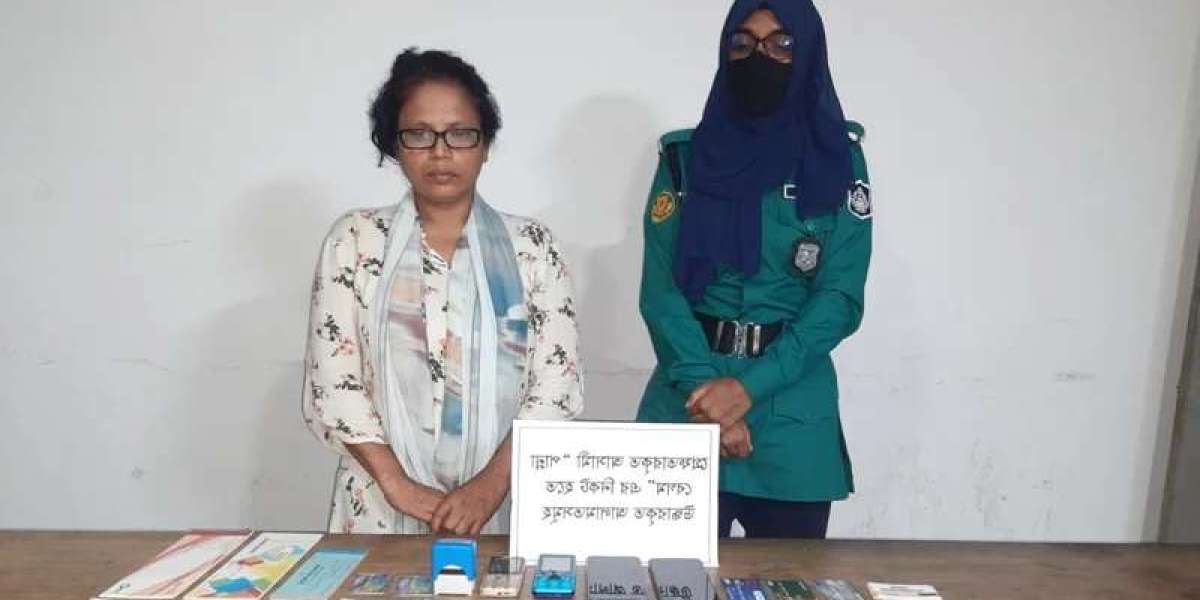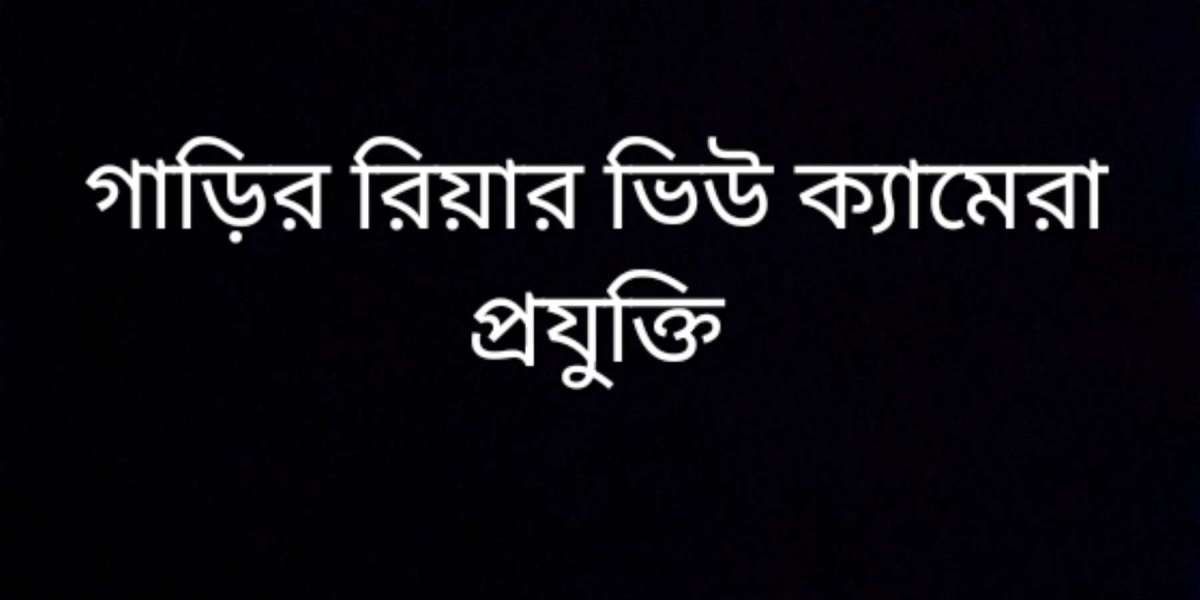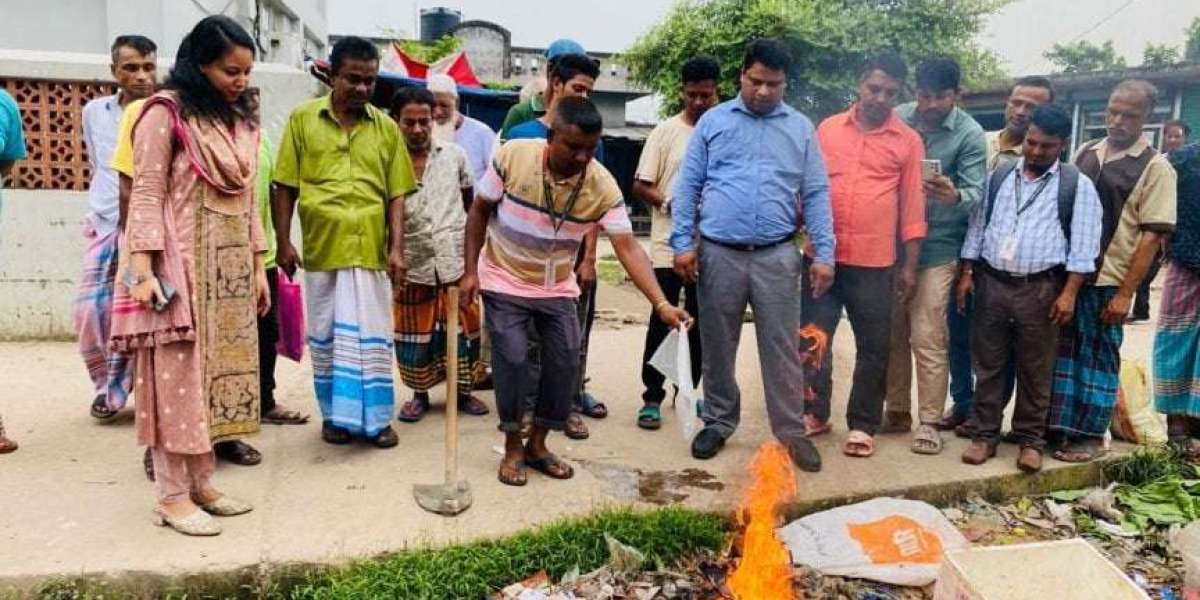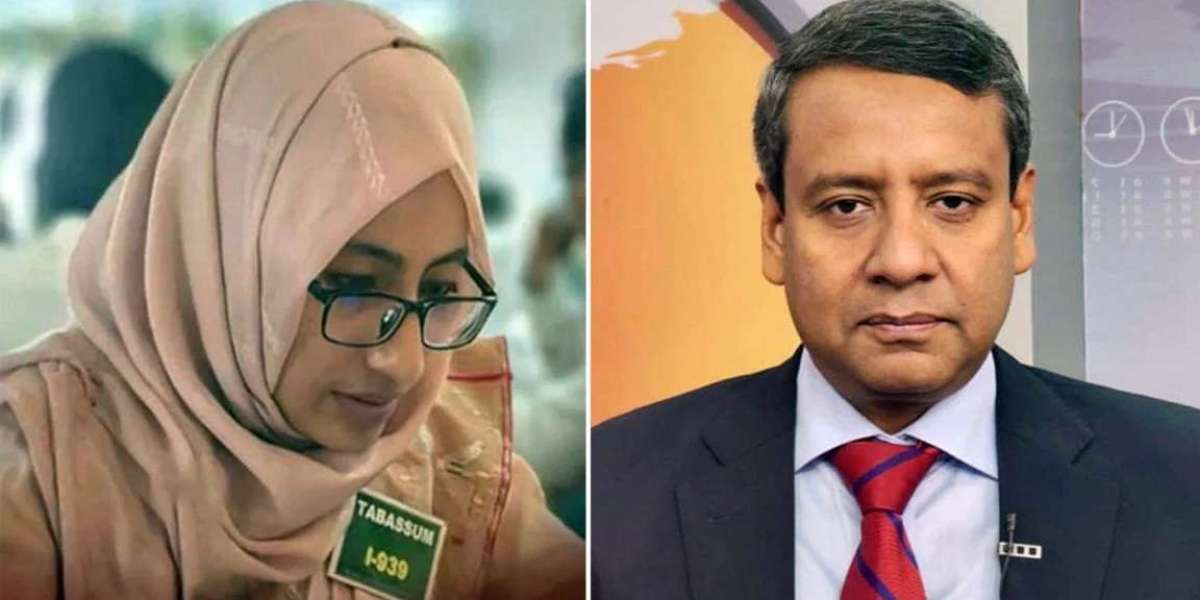Syed Ibn Rahmat: After the fall of the fascist Hasina in the July revolution, Nobel laureate Dr. An interim government was formed under the leadership of Muhammad Yunus. This government is getting a lot of praise and support from all walks of life in the country as well as in the international arena. As a result, the vanquished villain and his minions are dying of jealousy. They have even taken to the field with declarations saying that they will not allow this government to remain in peace even for a single day.
On the one hand, their own humiliating defeat, and on the other hand, the widespread support and acceptance of the interim government at home and abroad, is gradually increasing their internal combustion. Therefore, to seek revenge, they are appearing with one movement after another under the guise of various classes and professions, including minorities. Most of it has already been mitigated. But in some cases it still exists, such as the garment sector, Chittagong Hill Tracts etc. Eliminating these problems is time consuming but not impossible. But in that case effective strategies should be thought of in the light of past experience and implemented with determination.
To get a clear idea of the conspiracies and crises that may arise after the fall of the Awami League government, we need to look back a little. In particular, it is not impossible to speculate about this after analyzing the course of events after the 15th August 1975 pot change. On August 31, I wrote an article entitled 'Danger of counter-revolution in the hills with the help of India'. Analyzing the continuity of history and the course of events after the fall of Awami League, it is clearly explained in which direction the course of events in Chittagong Hill Tracts is going. We have seen the next course of events, the Bengalis and non-Bengalis living in the Chittagong Hill Tracts have already been involved in two rounds of conflict. At least 6 people were killed and several people were injured. Shops were set on fire and even mosques were attacked. Although the situation is calm for now, the conspirators are not stopping. As a result, fear-distrust is increasing in the minds of the common people living in the mountains.
Until the moment before the success of the students' revolution, all of the non-Bengali population of the Chittagong Hill Tracts were directly against this movement, except for one or two exceptions. While students across the country were agitating for anti-discriminatory quota reforms in government jobs, non-Bengalis in the hills were holding marches and meetings demanding the retention of their 5% quota. On July 16, when the fascist government decided to finally suppress the movement and shot dead 6 students and through that the resistance movement gradually demanded a phase of the fall of the government, the non-Bengalis of the hills were still in the field demanding their quota. But those who saw the collapse of the government on August 5, immediately changed their minds and put on the clothes of the anti-discrimination movement themselves.
Claiming that they are anti-discrimination, those who create discrimination continue to continue their agitations on the demand of that quota. When the revolutionaries focused on preserving the memory of the revolution by painting movement slogans and events graffiti widely across the country as their success story, the hill Bengalis took that opportunity to paint controversial and conspiratorial graffiti in various places. Through these, on the one hand, as they took steps to assert themselves as revolutionaries without being in favor of the revolution, they used that opportunity to bring forward their old inventive and unconstitutional demands, which naturally became a cause of anger among the Bengalis who participated in the revolution. From there, the tension between the two sides started to increase.
In this tension in Khagrachari. A young man named Mamun was called and killed from his furniture shop. His body was found the next day. According to the police, Mamun is a thief, there is a case in his name before. On the day of the incident, he had an accident while stealing a Honda, and was later caught and beaten up. When he was taken to the hospital, the doctor declared him dead. But a video of Mamun's killing went viral on social media, where he is seen being held down on the ground and tortured by several non-Bengali men and women.
Seeing this footage, Bengalis were enraged, students of Dighinala College took out a protest march. When the procession reached Larma Square in Dighinala Bazar, some non-Bengali youths tried to stop them, the procession was fired on from the other side. As a result, the tension reached a peak. Bengali-non-Bengali dawa-palta dawa started. At one stage, various shops in the market were set on fire. According to a BBC report, 56 Bengali and 50 non-Bengali shops were burnt as a result.
Several people from both sides were injured in the Dighinala incident, one of them was in critical condition. At that time, rumors started spreading on Facebook from various IDs and pages. Even from different fan pages of Bangladesh Awami League, it is promoted that 67 people of minority ethnic groups have been killed. As a result, panic spread in the three hill districts. That evening, the non-Bengalis gathered in Khagrachari Sadar and entered the field. The Bengalis also prepared to resist them. Law enforcement personnel stepped up patrolling to calm the situation. But even if they could suppress the Bengalis, the non-Bengalis were not retreating in any way. Instead, they also attacked army vehicles while transporting patients. Taking advantage of the darkness of the night, they started shooting from a distance targeting the army vehicles.
Forced, the army also had to respond by firing back. Some were shot and injured. Due to this tension spread in different places of the hill. At one point, an unpleasant incident also happened in Rangamati. There were also casualties. Just when the situation was on the way to calm down due to the massive action of the administration, the non-Bengali students snatched Khagrachari Technical School and College teacher Sohel Rana from the police and beat him to death by accusing him of rape. Not only that, they also vandalized various rooms and other materials of the educational institution. Through this once again Bengali-non-Bengali tension spreads.
The administration has quickly brought the situation under control by issuing Section 144, but the conspirators have kept fear in the air of the mountains. On the one hand they are boycotting the market, on the other hand they are holding marches and meetings in different places of the country including Shahbagh in the capital, Raju Bhaskarya of DHA, National Press Club, Chabi Campus, Cheragi Pahar intersection, on the other hand they are holding marches and meetings outside the country especially in different places of India. Blaming the government.
They are also holding meetings in India's Tripura, Arunachal, Assam, Delhi; The non-Bengalis of Chittagong Hill Tracts have made human chains and marches in Europe and America as well. Even during the General Session of the United Nations, they tried to destroy the image of the Chief Adviser through various protest programs. The surprising thing is that, in view of these incidents, the MPs of Tripura have written a letter to Modi and demanded direct intervention in the Chittagong Hill Tracts. Some even claimed to take away the Chittagong Hill Tracts from Bangladesh and join them with India!
The reality is that every recent conflict in Chittagong Hill Tracts has been initiated by non-Bengalis. Not only that, they also arranged for a major conflict involving Bengalis in that incident. As a result, whenever the Bengalis got angry, took the field to resist, they again took the opportunity to promote themselves at home and abroad by playing the victim rule. Many people ask, why is this happening in the mountains, who is causing it? What is the solution? In fact, these are very old techniques. If history is known, it will be easy to understand, as well as solution. Pakistan gained independence from the British on 14 August 1947.
All parts of then East Bengal (later East Pakistan), present day Bangladesh were supposed to be independent as part of Pakistan. But it did not happen in Chittagong Hill Tracts. Indian flags were still flying in Bandarban and Rangamati (Khagrachari was not an important area then). Later, on August 17, members of the Pakistan Army had to go and lower the Indian flag and fly the Pakistani flag. Descendants of those Indian flag hoisters are still active in the hills.
Surprisingly, the fact is that they still observe that 17th August as 'Black Day'. Although they don't do it openly in the Chittagong Hill Tracts, the Chakmas living in Tripura do it quite casually. They did the same during the liberation war in 1971. Chakma Circle Chief of Rangamati and Bomang Circle Chief of Bandarban joined the Pakistanis against the freedom struggle. Raised by Razaka army. The members of the Liberation Army in Rangamati had to face the most obstacles in their resistance against the Pakistanis from the Chakma Razakars.
Bir Shrestha Munshi Abdur Rauf, Captain Mushfiq and many other freedom fighters were martyred in Naniarchar while confronting the Pakistani invaders and Razakars. Not only that, Bangladesh became independent on December 16, 1971. But the Chakma and Mizo Rajakars from hiding in the hills of Chittagong Hill Tracts continued to fight against the Allied forces even in 1972. The surprising thing is that Sheikh Mujibur Rahman has just returned home from Pakistan's prison and assumed the responsibility of the head of the government, on the other hand, the allied forces are still having to carry out operations against the Chakma and Mizo Razakars in the hills, at a time when two groups have appeared in the capital with demands for autonomy on behalf of the residents of the hills!
When 'Bengali nationalism' was adopted in the 1972 constitution, the founder of the Chittagong Hill Tracts Janasahti Samiti (JSS) MN Larma opposed it and formed the Armed Peace Army to establish an independent Jumma Land. But after asking for help, he did not get a response from India and later joined Bakshal. After the coup d'état of 15 August 1975, he became active in the armed rebellion with the help of India. After losing the government of its choice in Bangladesh, India then used MN Larma and his armed organization Shanti Bahini to destabilize the country.
Dehradun provided training at the military academy, weapons, large sums of money, food, clothing and secure bases in India's Tripura and Mizoram. Meanwhile, the revolution of Sepoys and Janata took place in the country on November 7. Through this revolution, the sepoys brought General Ziaur Rahman to the center of power. Chittagong Hill Tracts was the battlefield of Ziaur Rahman, the 1st sector commander and later the head of Z Force during the liberation war. As a result, there was a clear understanding of the history, geography, population and instability of the border region.
Because of his clear vision, President Zia understood what to do to solve the mountain crisis. He frequently visited the Chittagong Hill Tracts and on the one hand held a series of meetings with the social and group leaders there and was able to establish close contact with the local people. To remove the apprehension of many people about 'Bengali nationalism', he replaced 'Bangladeshi nationalism' in the constitution. Chittagong Hill Tracts Development Board was formed for the development of the common people, tribal cultural institutes were established for the protection and development of their culture, they gave their quotas in medical colleges, engineering universities and public universities to give higher education opportunities to the hill students. He created many opportunities for them to get employment in government jobs.
Trival Convention was formed to ensure their empowerment politically. Also, roads, educational institutions, religious institutions are built around the mountains. As a result of these humane and sincere initiatives of Ziaur Rahman, positive changes in almost all aspects of life including education, health, employment, political leadership, cultural practices started coming among the common people of the hills.
advertisement
At that time, some hill leaders also presented their demands for autonomy to President Zia. At the same time separatists continued armed attacks against the state with the help and cooperation of India. Then Ziaur Rahman rehabilitated several families from the plains to the mountains, who on the one hand brought the vast uncultivated land of the mountains under cultivation, and on the other hand became one of the foundations for protecting the independence and sovereignty of the country. He also emphasized the role of the army in the security of the common people and suppression of separatists. As a result, JSS's tactic to pressurize the state backfired. At the same time Shanti Bahini field commander Santu Larma, younger brother of JSS president MN Larma, was arrested. As a negotiation strategy, Santu Larma's wife was first hired as a primary school teacher to alleviate the family's financial woes. Later, President Zia also released Santu Larma for the sake of peace talks. But Santu Larma did not stop talking after being released, he went back to the jungle. On the other hand, President Ziaur Rahman was killed by some stray soldiers. Due to which it was not possible for him to end the mountain problem.
People in the know about the Chittagong Hill Tracts strongly believe that if President Zia had given 2 to 3 years more time, he would have been able to find a permanent solution to the problem of the hills. In particular, the replacement of 'Bangladeshi nationalism' in the constitution and the resettlement of Bengalis in the hills are recognized by many researchers as the most far-sighted, far-reaching and significant steps towards solving the hill crisis. Even Bengali resettlement and Bangladeshi nationalism undermined JSS's pressure to demand tactics, as many minority researchers have pointed out in their writings. President Ziaur Rahman's strategy was 'bent bamboo flute and battle spear in one hand' and he successfully thwarted the peace forces and Indian conspiracies. But it is the misfortune of the nation that the subsequent rulers could not continue the education from there. Under the pressure of India, they have only played the 'flute' to deal with the problem, but have remained ignorant of the 'war-turya'. As a result, peacekeepers have squeezed as much as governments have given concessions.
Taking advantage of the wrong policy of the government, they first extorted the district council. Later, the agreement was reached, in the light of that agreement, the authority of the Zilla Parishad was unconstitutionally increased, the regional council was collected, the land commission was collected, the land commission law was collected. Many more such things have been realized. Of the 72 clauses and sub-clauses of the agreement, 65 clauses have already been implemented. But they did not implement the only clause in the agreement that was valid for them 'surrender of arms'. Despite the drama of some arms surrender, JSS has been increasing its stockpile of more formidable and sophisticated weapons than before, giving thumbs up to the deal. As a child, I heard a story of a demon, whose one head was cut off and seven heads would grow. Like the demon in the fairy tale, after the government made a pact with a group on the mountain, seven such heads sprouted there with various names. Earlier, where the common people were victims of various terrors including extortion, disappearances, murders by an armed group, now there are 6/7 terrorist groups with different names being harassed and oppressed.
On the other hand, although the JSS and the government were parties to the agreement, India controlled everything behind it, due to which, at that time, the prostrate government had no chance to play any role in protecting the interests of Bangladesh. Moreover, the then Prime Minister Sheikh Hasina did not hope for peace through this agreement, but more than that, she hoped to win the Nobel Prize and become a world leader. The resulting agreement is unilateral, unconstitutional and a threat to the sovereignty and integrity of Bangladesh. That is why, it is never possible to fully implement it while keeping the map, independence, sovereignty of Bangladesh intact. On the other hand, Santu Larma has been in power since May 12, 1999 as the chairman of the regional council created in the light of the agreement. Seeing an unelected person sitting in power unfairly for more than 25 years in a row has left many people feeling dismayed. The UPDF has been demanding for a long time that the government should sign an agreement with them and give them a share of power. In that direction, the newly born KNF in Bandarban is also seeking an agreement. They should also be empowered. The greed of this power is also behind the instability of the mountain at the moment.
Local councils across the country have been dissolved since the interim government was sworn in on August 8. But the three hill district councils are still intact, new councils will be formed anytime. On the other hand, as the Chairman of the Chittagong Hill Tracts Development Board is an advisor, there will be new appointments there as well. Moreover, the refugee task force chairman will also be appointed. There is widespread whispering in the hills, JSS and UPDF are desperate to get their own people in these recruitments. In that case, as a strategy to force the common people of Chittagong Hill Tracts to make decisions in their favor, conflicts are being incited through various conspiracies. And taking advantage of this situation, the defeated power Awami League and its lord India are giving it air. If we want to solve the problem of mountains, we have to understand these deeply and take strong steps to deal with them. Above all, to protect the independence, sovereignty and integrity of the country, the people of the hilly areas should follow President Zia's formula of 'suppressing evil and fostering order' with a firm hand for the sake of peace.
Terrorists cannot be exempted. Because, the more concessions are given, the more they will get. Discounts should be stopped. An operation is underway to recover illegal weapons across the country. It should be strengthened in the mountains as well. If necessary, all groups of terrorists there should surrender their arms and surrender. After the deadline, the combing operation should be carried out all over the hill. In this they can cross the border and take refuge in the neighboring states of India. To stop that, the border should be sealed. If necessary, one lakh landless families from the plains should be rehabilitated by deforesting the required land from the reserve forest in the border area.
Another thing to consider is that 1.2 million Rohingyas are living in Ukhia and Teknaf camps in Cox's Bazar, which is not in balance with the environment there. So the government is keeping things in Bhasanchar. But even that cannot be resolved. Therefore, 100,000 Rohingyas can be moved to one of the reserve forest areas of Chittagong Hill Tracts. This will improve the environment of Cox's Bazar on the one hand, and on the other hand, the strategy of the mountain armed terrorists to put pressure on the government will also fail.
sayedibnrahmat@gmail.com



















































